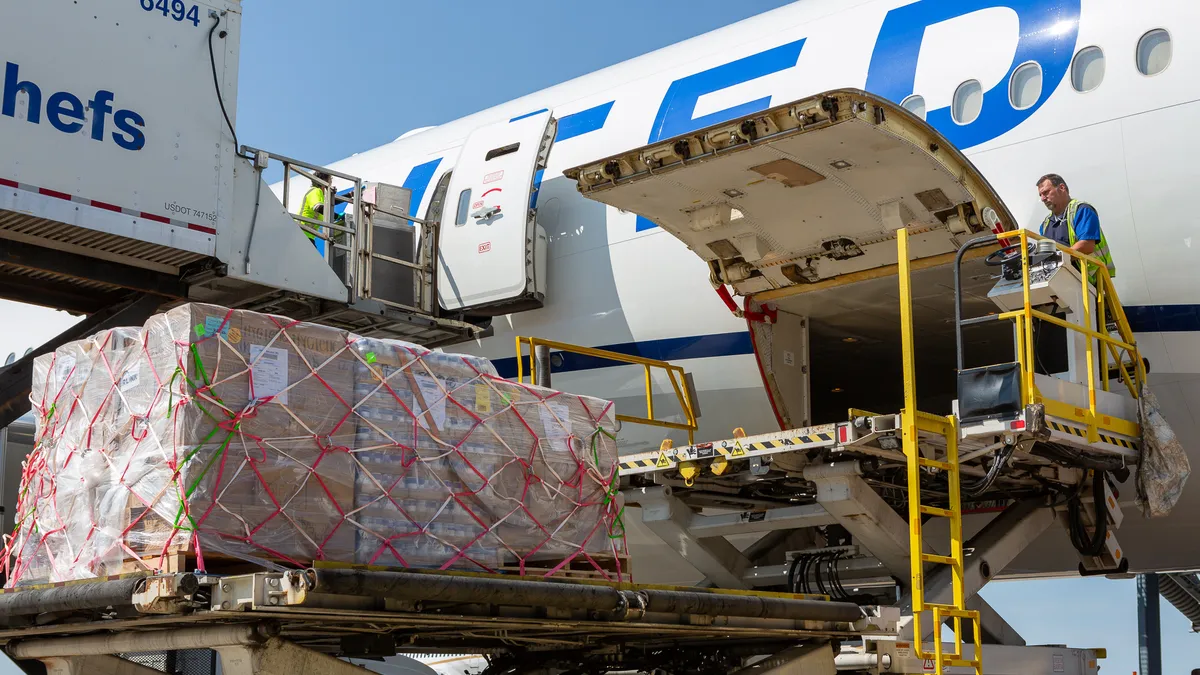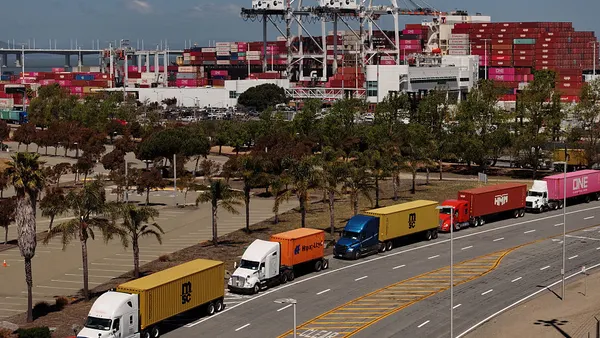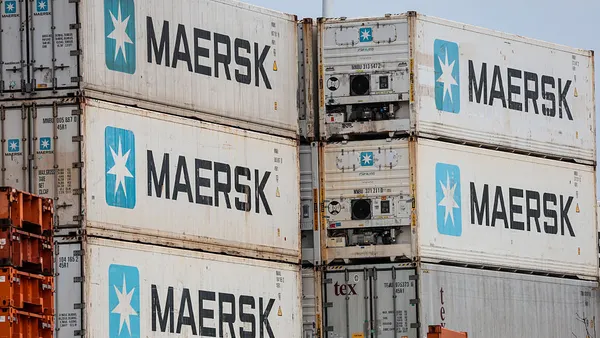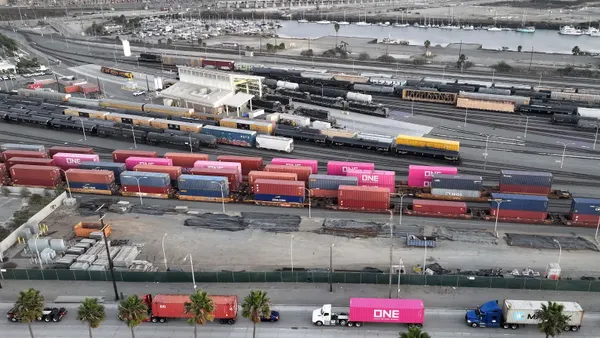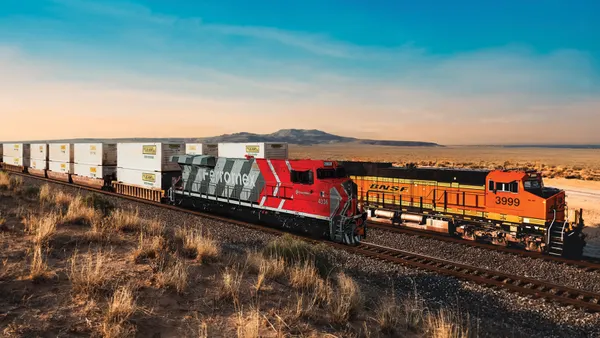Year after year, supply chain professionals report hiring skilled workers as their biggest challenge. Yet year after year, peak season begins with a slew of announcements from logistics providers and retailers about their plans to ramp up hiring by hundreds of thousands of workers.
Something doesn't add up.
This year's peak season promises additional challenges in recruiting new hires, as the pool of available workers shrinks. Unemployment reached a 50-year low in September, according to the latest data from the Bureau of Labor Statistics (BLS).
Lucas Hiler, director of strategic sales at recruiting and staffing agency Aerotek, told Supply Chain Dive the 50-year figure is somewhat misleading because it includes the Vietnam War, when unemployment was virtually zero. "I think it's an all-time low," he said.
The arid pool of available talent will challenge supply chain managers to boost productivity and take a unique approach to recruit — and just as importantly, retain their workers.
Peak season 2019: The gauge for future years
In September, UPS announced plans to hire 100,000 employees for peak season, and FedEx said it would seek 55,000 workers for the end of the year. Retailers have also stated their intentions to hire thousands for seasonal positions, many of which have fulfillment or logistics-related job functions.
Hiler said the hiring plans for peak season make him shake his head. "That's a huge undertaking," he said. "It makes me wonder, how are they able to hire a quality employee? Or are they just bringing in somebody that is not qualified for the job?"
Peak season 2019 hiring
| Company name | Planned seasonal hires |
|---|---|
| UPS | 100,000 |
| FedEx | 55,000 |
| Dollar Tree | 25,000 |
| Dick's Sporting Goods | 8,000 |
| Macy's | 80,000 |
| Gap Inc. | 30,000 |
| Michael's | 15,000 |
| Kohl's | 90,000 |
| Party City | 25,000 |
| Target | 130,000 |
Source: Company press releases
UPS and FedEx expressed confidence in their abilities to recruit talent to handle operations and logistics for peak season.
"We regularly ramp up and scale back our recruiting as the needs of the business dictate, like for our upcoming holiday season," a FedEx spokesperson told Supply Chain Dive by email.
A UPS spokesperson shared a similar view. "Since we've been doing this for over a hundred years we're confident we'll deliver the holidays successfully," the spokesperson told Supply Chain Dive by email. The last week of October 2018, UPS executives noted the company was 60% to 70% of the way to the 100,000-hire goal. The week before, it hosted a one-day hiring blitz known as "Brown Friday" to recruit seasonal workers.
"This will be a good gauge to see how well the industry can perform at a stressed level."

Kyle Lintner
Principal and Director of Markets, K-Ratio
Kyle Lintner, principal and director of markets at K-Ratio, told Supply Chain Dive this year's peak season, in particular, will serve as a test for the retail and logistics industry and how they handle future peak seasons, due to the compound effect of an anticipated strong shopping season and historically low unemployment.
The National Retail Federation projects retail sales growth of 3.8% to 4.2% over last year's holiday season. "This will be a good gauge to see how well the industry can perform at a stressed level," Lintner said.
Patrick Houston, a managing director in the consumer products practice at AlixPartners, said one strategy some businesses have already deployed for peak season is cross-training the labor force, particularly in factories. Training across skill sets "is helping to reduce rigidity in roles and to flow resources to the greatest needs, thus reducing peak-load staffing and associated costs," he told Supply Chain Dive in an email.
Is technology a solution to labor shortages?
Since unemployment has remained at 4% or lower for the last year and a half, supply chains have already made adjustments to boost productivity, Houston said. Much of this has come through investments in automation and data analysis, he added.
Numerous research reports and studies have unearthed correlations between technology integration and productivity. Deloitte found manufacturers that adopted smart technology saw labor productivity increase 3% each year between 2015 and 2018.
Logistics providers have doubled down on technology and automation within facilities to keep operations running smoothly during peak season. DHL's robotics investments for peak season last year increased productivity 25%, Scott Sureddin, CEO of DHL Supply Chain, North America, said in January. UPS is breaking ground on "super hubs." Its Atlanta location can sort 100,000 packages per hour.
"When we get to the end of the year, and things get busier, they'll lean on technology harder," Lintner said. He named artificial intelligence and IoT as examples of technologies to enable track and trace capabilities during peak season for greater efficiency.
On the transportation end of the supply chain, the discussion of technology as a solution for the driver shortage typically centers around autonomous trucks. But as it stands, the technology isn't a replacement for working capital. In the foreseeable future, autonomy most likely means a hybrid model with a human operators still in the cab, Lintner said.
Productivity growth doesn't have to come solely from advanced technology, however. Solutions that optimize operations, such as fewer empty miles in trucking, Lintner said, will also increase productivity. "It could lead to greater efficiencies in 2020 and beyond," he said.
"It is truly about making an employee feel valued and wanting to stay."

Lucas Hiler
Director of Strategic Sales, Aerotek
And even for productivity that comes through robotics, net job loss is not always the end result. "Technology has to be created by somebody or maintained by somebody," Hiler said. "It doesn't necessarily remove jobs from the economy ... it only shifts the various types of jobs."
The shifting of job functions from repetitive, and sometimes dangerous, tasks to strategic and critical thinking roles could be among the answers to retaining workers. Companies large and small are investing in reskilling programs, training current employees on new job functions, often related to technology. "It is truly about making an employee feel valued and wanting to stay," Hiler said.
Still, in a tight labor market, re-skilling investments alone are not enough to maintain the necessary levels of human capital. "The main factor is still going to come down to basically the paycheck," Lintner said.




